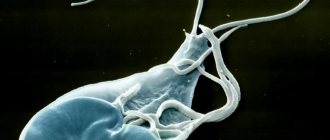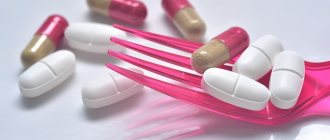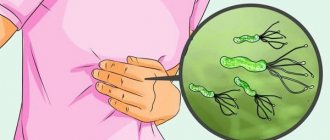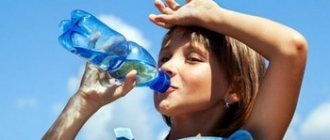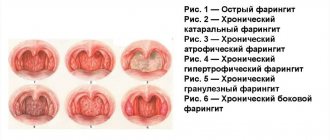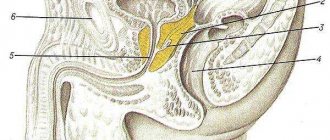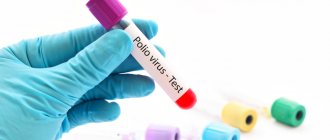Dehydration, or dehydration, is a life-threatening and requiring immediate treatment, an abnormal condition of the body, both in children and adults, when the overall fluid level drops to critical levels. The optimal proportion of fluid is 80%, a loss of 10% is accompanied by painful manifestations, a loss of more than 20% leads to death.
It is not for nothing that moisture is called “life-giving”, therefore, with the initial signs of dehydration in an adult, he needs urgent measures to provide competent assistance. How to recognize the symptoms of dehydration, what exactly the person providing assistance is required to do, how and how to treat a lack of moisture - we will look at this in the article.
What can cause an adult to lose moisture?
Symptoms of characteristic adult dehydration occur in those who lose moisture faster than it enters, including eating, drinking, and inhaling moist air vapor. Thus, the physiological needs for it are not met, and signs of an acute deficiency of water molecules arise.
The natural loss of some water occurs regularly throughout life - this is physiology.
- When sweating, the body is forced to waste a significant portion of water for thermoregulation.
- The lion's share of water is excreted through the excretory organs in urine and stool.
- Through the respiratory organs, when exhaling, steam consisting of water molecules is released.
These natural losses are easily compensated for by drinking and food, with which the body’s needs are again saturated. Breathing also helps - after all, with each portion of air we receive moisture vapor that is concentrated in it. Therefore, such losses in themselves, if the body is healthy, do not lead to symptoms of dehydration.
Dehydration stages
The occurrence of pathological dehydration of the body and its symptoms in adults occurs when moisture is lost so intensely that the body does not have time to replenish its water supply. In this condition, a person requires help and treatment, otherwise, if the loss is not stopped, death will occur.
- In the first position for the reasons that provoke symptoms of dehydration is long-term repeated diarrhea, so its treatment must be started immediately.
- Increased frequency of urination, often caused by infectious factors, similarly contributes to severe water loss.
- Persistent and profuse vomiting is especially dangerous - signs of moisture deficiency quickly appear in the body, and its compensation through drinking becomes a problem - everything drunk is expelled again, without having time to get to the tissues of the body.
- An increase in body temperature, accompanied by severe sweating, caused by illness or overheating, is another important factor leading to a lack of moisture.
- Increased blood sugar levels increase the need for water - often diabetics are not content with the usual 2 - 2.5 liters, which is enough for a healthy adult, but drink up to 4 - 5 liters. Accordingly, their urination is more intense.
- Powerful loads on the body, if they do not receive water from the outside, can remove a significant percentage of moisture through sweat, causing symptoms of its lack.
- Serious skin lesions over a large area, due to burns or an acute infectious process, affect moisture loss, as they consume it in increased quantities for regeneration.
This concerned pathological abnormal moisture loss, but there are situations where moisture supply is obstructed, causing a similar pattern of signs of dehydration in adults and children.
- Immobility of a person does not make it possible to independently quench thirst and replenish the body’s need for fluid. This could be an accident, disability, coma, injury.
- The absence of an accessible source of water or other liquid for a period of several days will necessarily lead to an acute shortage of fluids.
- Impaired swallowing function, if a person is not treated and helped, will quickly lead to the onset of dehydration.
Treatment in cases with difficulty in fluid intake consists of helping to eliminate the cause of dehydration, which prevents the body from saturating with moisture.
Read also Domestic insect bites
Dehydration Basics
Dehydration is a lack of fluid and is one of the serious diseases. Sometimes it can be a kind of signal about the development of more severe pathologies. To avoid excessive manifestations of the disease, you should know the main causes and signs of dehydration.
A decrease in the level of normal water balance leads to the occurrence of disease. If you spend a long time in the sun, the first symptoms may appear. Sometimes their occurrence is provoked by an unbalanced diet or diet. It is very important to understand that this is how real dehydration can begin. Symptoms that do not hesitate to appear should be able to be interpreted correctly in order to take timely measures.
Water is a necessary nutrient medium for cell life. It transports nutrients and allows the body to stabilize body temperature. Its deficiency impedes important processes and disrupts the function of food absorption.
Sometimes there is an opinion that water can easily be replaced with any other drink. For example, coffee, tea, alcohol, soda. Not at all like that. Many of the drinks, in addition to water, also contain dehydrating components. Caffeine is one of them. Therefore, from drinking such a drink you can lose much more moisture than you would like to gain. Alcohol should be included in a special category. He is simply a leader in dehydration. Hot tea during a cold also quickly removes fluid due to sweating. This is also wrong, although a person usually experiences relief. It is much better to drink warm water. You can add lemon and honey to it.
How much water should you drink per day?
A person consists of 70-75% water. This environment is actively involved in all vital processes - metabolism, cell nutrition, removal of toxins and waste, body thermoregulation, etc. In addition, water ensures stable functioning of joints and muscles.
We lose fluid every day in the form of sweat and urine, so its supply in the body must also be replenished regularly. It is best to use regular non-carbonated water for drinking during the day. Tea, coffee and other drinks are not suitable for this, and they are also powerful diuretics.
The amount of water consumed per day depends on many factors: climatic conditions, lifestyle, age, physical activity, etc. However, the required volume for an adult varies from 1.5-2 liters of ordinary water per day.
Symptoms of dehydration in adults
The picture of dehydration of the body, symptoms and treatment depend directly on the quantitative value of moisture deficiency, so their intensity varies.
- Unbearable dry mouth with thirst are the main signs signaling the need to replenish the body's water supply.
- A swollen tongue and dry mucous membranes already indicate a noticeable lack of fluid.
- An increased pulse and heart rate are symptoms of progressive dehydration.
- Dizziness, confusion, loss of sense of orientation, fainting - emergency competent assistance and subsequent treatment are required.
The following symptoms will complete the picture of dehydration:
- Flaccid turgor, when pinched skin slowly returns to its original state.
- Scanty urination and dark, rich color of urine.
- No sweat when overheated.
Symptoms of dehydration
The initial symptoms can be eliminated without the involvement of doctors by providing the victim with all possible assistance. But when there is a serious condition, then seeing a doctor and the treatment he initiates becomes the only sure way out.
When medical attention is required for dehydration
The problem of what to do in case of dehydration in an adult is solved according to the situation, taking into account the condition and the reason that caused it. But several warning factors require medical intervention, and sometimes urgently.
A trip to the doctor or calling him, as well as the treatment prescribed by him, will be required when the following problems with the body are present.
- Diarrhea with profuse discharge does not go away for more than 2 days.
- Symptoms of debilitating vomiting last longer than a day.
- An increase in the overall temperature to maximum figures - 39°C and above.
- Lethargy and loss of strength.
- Rare and scanty urination.
- Abnormally rapid weight loss.
You will have to call the emergency room immediately if there is such a picture when dehydration threatens your life.
- A person has a fever, and the thermometer shows 40°C.
- The victim has not urinated in the last 12 hours.
- Presence of loss of orientation, fainting, lethargy and apathy, headaches and chest pain.
- Increased heart rate and pulse rate, difficulty breathing, convulsions.
If there is no medical help for an organism dehydrated to such an extent, the person will be doomed.
Consequences of dehydration
| For the brain: | For blood: | The immune system: |
|
| increased risk of developing immunodeficiency chronic diseases (bronchial asthma, scleroderma, etc.) |
| Metabolism: | ||
| obesity |
How does a doctor determine the degree of dehydration in a victim’s body?
To identify the cause and extent of water loss and begin treatment for dehydration, there are tests and tests.
- Measuring your body temperature, heart rate, and blood pressure will help determine how severe you are dehydrated.
- Taking urine from someone who is losing fluid for analysis, where increases in sugar, proteins and ketones will indicate the degree of water deficiency.
- A blood sample is taken for further consideration of all kinds of indicators and abnormalities that indicate the causes of moisture loss - infections, diabetes, kidney pathologies.
Based on them, as well as based on the symptoms, the doctor makes a verdict on the necessary treatment for dehydration.
Establishing diagnosis
Dehydration may be suspected in cases of persistent vomiting, diarrhea, or fluid loss through urine or skin. Symptoms associated with severe dehydration include pale, cool and clammy skin, rapid heart rate and breathing, and severely low blood pressure. Some people may also feel restless and complain of thirst. The skin on the knees and elbows may be patchy. If urine is produced, it will be dark yellow or amber in color.
The diagnosis of dehydration is usually based on symptoms and physical examination.
Treatment for dehydration in adults
If the intensity of moisture deficiency is not high, the victim may limit himself to the help of his family, when the loss of fluid can be replenished within his own walls.
In case of a threatening picture of dehydration, when a visit to doctors cannot be avoided, competent pre-medical assistance can be provided by loved ones, so we will definitely analyze its techniques.
They will also be useful when identifying an unfamiliar victim on the street with signs of acute water deficiency, in order to provide the person with the necessary support measures until the ambulance arrives.
Help with dehydration at home
If there is a lack of fluid, the main thing is to replenish it in any suitable way, simultaneously eliminating the obvious root cause.
- If the victim is able to drink, provide fluids suitable for drinking.
- If swallowing is difficult, put a piece of ice in his mouth or provide drinking through a tube or straw.
- Taking small sips of liquid will help with vomiting.
- If the cause is overheating or a high temperature, then sucking on ice cream, especially fruit ice cream, can facilitate fluid flow and reduce the temperature.
- Protein nutritional shakes will not only provide the body with moisture, but also the necessary energy.
Read also: What to do if you have food poisoning? Symptoms and treatment at home
If there are obvious signs of overheating, the body must be cooled effectively but carefully. There are certain subtleties here so as not to harm a dehydrated person.
- First, you need to undress him as much as possible so that nothing interferes with thermoregulation.
- If possible, direct the air flow from the fan or air conditioner towards it.
- If this happens on the street, the person should be moved to the shade and, having been freed from excess clothing, fan his face and chest with something like a fan for some time.
- To speed up cooling, use water - spray or simply wet your face, chest and other exposed areas of the body.
Important! Do not use ice on an overheated body - this will have the opposite effect, the blood vessels will narrow and heat exchange will be disrupted.
Treatment of dehydration in a medical setting
Providing emergency medical care for dehydration is similarly aimed primarily at eliminating the lack of moisture in the body.
- The introduction of donor blood components will replenish the required volume of circulating blood.
- Intravenous fluid intake is guaranteed to saturate the cells with moisture.
- Cooling of an overheated body or a patient with a maximum temperature is achieved by ventilation, immersion in a bath and other medical methods.
- Along the way, indicators of urine, blood, blood pressure and heart function are analyzed.
- If medications are required to eliminate the underlying cause, they are administered in parallel.
When threatening symptoms are relieved after replenishing the water deficit, the patient can leave the hospital if he does not require further therapy.
Oral rehydration solutions
This section will not consider drugs packaged in 200-400 ml glass bottles or plastic bags. These are sterile solutions for intravenous administration. These are the drugs “Disol”, “Trisol”, “Lactasol”, “Acesol” and others. There is no point in buying them to take them internally. It is also strictly forbidden to replenish fluid deficiency with energy drinks, tonic water, carbonated sweet lemonades and fizzy drinks, sweet juices without prior dilution with water, Coca-Cola, and other liquids. They contain a lot of carbohydrates and carbon dioxide, and their osmotic concentration can increase fluid loss and only make you feel worse.
If there is no way to get to the pharmacy, then the simplest solution is one tablespoon of table salt and two tablespoons of sugar per liter of water. The solution will be even more effective if you add one teaspoon of baking soda. It is much better to take glucose instead of sugar, if you have it. Industrial solutions differ from homemade solutions by adding additional ingredients.
Historically, all solutions for replenishing fluid deficiency primarily, in addition to table salt, contained an energy substrate, glucose, so they had high osmolarity - more than 310 mOsmol. One of the first and main ones is the solution recommended by the World Health Organization, which is called the WHO solution.
This solution contains sodium chloride, potassium chloride and sodium bicarbonate, as well as glucose. The osmolarity of the solution was 331 mOsmol. This solution was used for a long time, and although it compensated for the deficiency of ions and fluid, the osmolarity was high, and the diarrhea did not stop. Moreover, diarrhea was then caused by the solution itself and acquired a hyperosmolar character, which, of course, is unacceptable.
It turned out that the WHO composition is good only in the case of cholera, since Vibrio cholerae specifically creates a high osmolarity of diarrheal fluid due to the massive release of salts and large loss of sodium. In cholera, the loss of sodium alone can reach up to 120 millimoles per liter of diarrheal fluid. In the modern world, with common intestinal infections, for example, with rotavirus infection in European countries, diarrhea is not so massive, and sodium is lost twice as slow, amounting to 55-60 millimoles per liter. Therefore, it was necessary to reduce the osmolarity of the solution, at least by several tens of units. Therefore, at present, Regidron, with reduced osmolarity, is considered one of the most famous, effective and popular solutions.
Regidron
Rating: 4.9
This bright yellow sachet contains sodium chloride, potassium chloride, sodium citrate and dextrose (D-glucose). Regidron's osmolarity ranges from 200 to 250 mOsmol per liter. The content between sodium and glucose in this powder is best for water absorption, and helps reduce the osmolarity load on the intestines. In addition, this solution has a milder taste, and the presence of sodium citrate improves energy metabolism, since citrate, or citric acid salt, is a substrate for the Krebs cycle, a universal cycle of tricarboxylic acids. It flows in almost every cell of the body and serves as a source of energy, being an essential element in the process of cellular respiration.
The medicine is used not only to restore water and electrolyte balance, but also acid-base balance. In addition to diarrhea, the product can also be used for intense sweating and vomiting, with the exception of persistent and debilitating cases when intravenous replenishment of fluid deficiency is necessary. The medicine should be dissolved in one liter of boiled cool water and given in the above proportions until dehydration is eliminated, diarrhea stops and water and electrolyte balance is restored.
Regidron is produced by Orion Corporation, Finland. Powder for oral solution, each package contains 18.9 g of powder, 20 packages in one package. The cost of packaging is from 340 to 400 rubles, about 20 rubles per package.
COMPLICATIONS
In cases of untimely consultation with a doctor or late treatment, dehydration causes a number of complications, including:
- Heat injury or life-threatening heatstroke - occurs due to intense exercise, heavy sweating and lack of absorption of any fluid;
- swelling of the brain - expressed due to the intake of large amounts of water after prolonged dehydration. In this case, the human body will not have time to readjust and pump a lot of fluid into the cells, which can cause them to burst;
- attacks of severe convulsions - appears due to an imbalance of electrolytes;
- shock from low blood pressure and lack of oxygen in the body. It is one of the most dangerous consequences of dehydration;
- renal failure and loss of filtration function;
- coma;
- death.
Causes and risk factors
All standards are calculated for standard living conditions. However, sometimes even more fluid is needed to prevent dehydration. This primarily applies to people who sweat a lot. And it doesn’t matter what caused it: hot weather, intense training or hormonal imbalances.
You should drink significantly more:
- pregnant women;
- nursing;
- athletes;
- after poisoning accompanied by diarrhea or vomiting;
- after heatstroke;
- during periods of frequent urination.
It is recommended to drink more while on a diet. A person who is losing weight does not receive nutrients in the usual amount. You can’t limit yourself to fluids to avoid metabolic disorders.
Dehydration often accompanies certain diseases. With diarrhea caused by intestinal infections, a large amount of fluid is lost, but alkaline ions are excreted along with it, so acidification of the body, or acidosis, develops. In children, this type of pathology develops rapidly and leads to severe disturbances in the functioning of internal organs. Salmonellosis, cholera and other forms of gastroenteritis can lead to dehydration.
If the disease is accompanied by vomiting, the body loses acid. Therefore, the blood reaction shifts to the alkaline side, which also adversely affects the general condition.
Burns to the surface of the body lead to severe forms of dehydration. In young children, even a 1st degree burn, when hyperemia of an area of the body occurs, may already be accompanied by loss of fluid. With more severe burns, when a bubble with interstitial fluid appears at the site of injury, the body loses a significant amount of blood plasma. A severe form of dehydration develops, which without treatment is fatal.
Loss of fluid is observed in diabetes mellitus, diabetes insipidus, and Addison's disease. Therefore, if left untreated, these pathologies can lead to severe dehydration. The risk increases in older people.
Dehydration can result from uncontrolled use of diuretics. They are prescribed to patients with hypertension, but some women use diuretics to reduce body weight. With constant use of pills, the body loses a lot of fluid and electrolytes, and severe disturbances in the functioning of the heart appear.
DIAGNOSTICS
As soon as the first symptoms of dehydration are detected, you must call an ambulance. While one of the relatives or those people who were close to the victim are waiting for the doctors to arrive, they need to prepare complete information about at what time the signs of dehydration were identified and what exactly they were. Regardless of who is injured - an adult or a small child, you need to give the patient liquid, it is best if it is purified water, but always warm; in no case should the person drink juices, compotes or fruit drinks.
First aid for dehydration
It will not be difficult for a doctor to diagnose the disease, because this disorder has its own characteristic signs for each age category - they are especially pronounced in children.
To determine the degree of the disorder, the doctor prescribes additional tests, including:
- general urinalysis - allows you to detect dehydration and its stage;
- blood test – performed to check the levels of electrolytes in the bloodstream.
In cases where after these measures it was not possible to accurately determine the disease, an examination for diabetes mellitus and instrumental diagnostics of organs such as the liver and kidneys are prescribed.
After confirming the diagnosis, the doctor prescribes treatment, which will differ for children and adults.
How to diagnose dehydration using blood tests?
If dehydration has reached a severe degree, then blood, especially from the peripheral ulnar vein, cannot be obtained for analysis. The vein collapses due to the lack of fluid, and the needle does not penetrate into the lumen of the vein, but pierces it through, since there is simply no lumen: after all, in soft veins it is created by blood pressure. Therefore, the first laboratory sign of severe exicosis is the inability to obtain blood from a peripheral vein.
If there is still blood, it flows with difficulty, since the hematocrit is very high - the ratio between liquid plasma and blood cells. That is, there are much more formed elements than liquids or plasma. This phenomenon is relative, and if there were the required amount of fluid in the blood, then all cellular elements would be observed in normal concentrations, distributed in a larger volume. And with dehydration, relative erythrocytosis, leukocytosis, and thrombocytosis can be noted.
In a biochemical analysis, the first thing that is noticeable is an increase in sodium in the blood plasma, and if there is severe repeated vomiting, then chlorine is also lost with it. The patient develops acidosis and the plasma bicarbonate concentration decreases. If dehydration is severe and acidosis progresses, then an increase in ketone bodies and lactic acid is noted as markers of decreased tissue perfusion.
TREATMENT
Treatment of children and infants consists of taking a medicinal solution, which includes potassium, sodium and other nutrients. Proportions are calculated for each small patient individually. This solution must be given in small portions and warm. The duration of use depends on the change in urine color. If it happens that the child becomes ill, you need to wait about an hour and then repeat the process. At the same time, you can continue to breastfeed your baby.
Read also First aid for arrhythmia, symptoms and treatment
Older children can be given foods enriched with carbohydrates a few hours after consuming the solution. Such treatment methods are carried out at home for mild disorders. If the degree of dehydration is moderate, treatment is carried out in a clinical setting. The therapy is based on the administration of the same solution, only not orally, but in the form of injections. After this, the baby is sent home, but the next day you need to see the doctor again. In severe stages, the child is treated only in a hospital, and in addition to the solution, the doctor may prescribe antibiotics and medications against vomiting and diarrhea. After discharge from the hospital, you need to call a doctor at home for a few days for an examination.
Treatment of dehydration in adults in the initial stages is carried out independently, but on the recommendation of a specialist. Often you just need to increase your fluid intake and remember to take it on time. But you need to drink only water, preferably at room temperature, and refrain from coffee, tea and sweet carbonated drinks. In severe stages, you need to eat foods rich in carbohydrates. Throughout the treatment, the patient must be constantly monitored by doctors.
Replenishing water supplies
It was said above that it is necessary to replenish not only fluid reserves, but also lost electrolytes. All methods of rehydration, that is, fluid replenishment, can be divided into oral and infusion (intravenous).
Oral rehydration, which requires drinking very often and in small sips, is possible in the early stages of dehydration, as well as in the absence of vomiting. If there is severe vomiting and diarrhea, then hospitalization and rehydration through intravenous infusions are necessary. If attacks of vomiting are rare, then it is also possible to replenish fluid reserves orally if you drink in frequent sips approximately every 10 minutes.
If there is no vomiting, but there is diarrhea, then you can give more liquid and less often, after each bowel movement approximately in the volume of lost liquid plus 10-20% of the approximate volume of watery stool. If we are talking about infants, then usually a solution to replenish fluid loss should be given at a rate of at least 100 ml per kilogram of the child’s weight, but no more than 160 ml. Therefore, if we are talking about ongoing diarrhea in a child, for example, weighing 9 kg, then he should drink from 900 ml to one and a half liters of liquid per day, provided that the diarrhea does not stop.
In general, a baby with mild dehydration will not be very willing to drink a salty oral rehydration solution. Therefore, if fluid replenishment is started early, then the child will be very happy to drink light chicken broth, mineral water that is not very salty, or even juice, but always diluted with water. But if dehydration continues, then compensation for the loss of salts is no longer possible.
In adults, naturally, there is less fluid in the body, therefore, in the presence of a mild degree of dehydration, an amount of fluid of no more than 50 ml per kilogram of body weight is quite sufficient, and about 80 ml per kilogram of body weight in case of a moderate degree of dehydration, when there is already a decrease in blood pressure and a deterioration in general health. well-being. It is advisable to drink the solution frequently, every 15 minutes, but in case of nausea - no more than 100-150 ml. Accordingly, you need to consume a liter or one and a half within an hour.
What solutions are created specifically to replenish fluids and salts, and are sold in pharmacies?
Prevention of overheating in hot weather, which causes dehydration
To avoid dangerous overheating on hot days, you need to follow a few simple rules.
- Try to wear light-colored clothes with a loose fit, made from natural fibers - they will ensure proper heat transfer.
- Stock up on a drink so that whenever thirst arises, you can easily quench it.
- Ensure access to drinking liquids for household members - children, the elderly, and the disabled.
- Avoid heavy physical labor or sports activities on peak hot days.
- Do not stay in the sun for a long time, even on the beach near the water, move to shady areas.
Important! Limit the consumption of beer, cocktails and other alcoholic drinks - they easily provoke excessive loss of moisture and deprive the body of self-control.
The habit of drinking enough water
If you previously drank little water, then immediately switching to 1.5-2 liters per day is not easy. It is important to gradually accustom the body to water. Drink 3 glasses a day first: in the morning, at lunch and before bed. Then after a month, increase the norm to 6 glasses and so bring it to 8-9 servings of 250 ml per day.
It is also important to drink water in small sips so as not to put too much strain on your kidneys. To train yourself to drink clean liquid every 2-3 hours, set a reminder alert on your cell phone.
It is also important to learn to distinguish the feeling of thirst from the desire to eat. Often, the body of modern people confuses these urges, which leads to excess body weight gain. The simplest solution: before you want to eat, drink a glass of water. If after 20 minutes the feeling of hunger has not passed, then it’s time to eat.
A little about intravenous rehydration
As practice shows, about 80% of all cases of severe fluid deficiency can be relieved with the help of oral solutions. The remaining 10-15% of patients require intravenous solutions.
Intravenous rehydration is carried out in two phases. The rapid onset phase, or initiation, is the main fluid replacement phase. The very first portions of liquid are designed to increase blood volume in the vessels, normalize hemodynamics, capillary tissue respiration, and increase pressure in the arteries of the kidneys. This will lead to restoration of diuresis, reduction of tissue acidosis, and will avoid the progression of metabolic disorders.
To begin replenishing the fluid deficiency, it is advisable to give the patient a regular solution of sodium chloride, called isotonic, or physiological, with a concentration of 0.9% in the first and second hour. The specific volume of administration should be 20 ml per 1 kg of body weight per hour. Such administration should be carried out 2-4 times, in portions over half an hour, followed by assessment of the condition. Then they switch to a slower, “planned” rate of introduction of more advanced solutions containing potassium and bicarbonates.
In cases of very severe, threatening dehydration, when the patient is in a comatose state, for example, with severe cholera, it is useless to use intravenous infusions into ordinary veins, for example, in the elbow area. It was said above that against the background of low pressure and blood thickening, all peripheral veins are collapsed, and the blood flow in them practically stops. Such an infusion will do nothing except worsen the condition.
Therefore, the patient must urgently have a catheter placed in a large vein - the subclavian vein, as anesthesiologists do in intensive care units, and even have a subclavian catheter placed on both sides, right and left. The patient is injected in a stream or very quickly by drip with a sterile solution for intravenous rehydration, which was described above. It is very important that the solution is heated to body temperature and even a little higher, up to 37 degrees, since during a dehydration coma the body temperature decreases. And additional administration of a large amount of cold solutions can even cause reflex cardiac arrest.
After blood pressure has stabilized and oxygen saturation in the capillaries has increased, it is necessary to fight intravascular thrombosis, a shift in acid-base balance towards metabolic acidosis, and fight the underlying disease. This should be done by specialist anesthesiologists and resuscitators who know how to treat such severe dehydration, and the cause of dehydration - for example, salmonellosis - should be dealt with by an infectious disease specialist or other specialists.
If pure water is not to your taste
Sometimes raw water is not very tasty, especially for people who are not used to drinking it.
In this case, try the following liquid additives:
- Citrus. Add a slice of lemon, lime or orange to a glass of water and refrigerate overnight. It will be pleasant and healthy to drink this water in the morning.
- Pineapple water is not only pleasant to drink, but also activates metabolic processes in the body - helps to lose weight. In addition, it removes toxins and antioxidants from the body, treats arthritis, atherosclerosis and other joint diseases. The recipe for pineapple water is simple: chop 200 grams of the product without peel, add a little mint, add 2 liters of water and leave in the refrigerator until the morning.
- Apple water will help you cheer up in the morning. The simplest recipe is to chop a sour apple, add half a teaspoon of grated ginger and a quarter spoon of cinnamon, then pour 1.5 liters of boiling water over everything and leave to cool in the refrigerator.
- Berries. In the summer season, you can take 200 grams of any berries, mash them, squeeze lime juice and add a sage leaf. Pour 2 liters of water and leave in the refrigerator until the morning.
Who is at risk?
Observations confirm that some people become victims of dehydration more often than others. Those most at risk are:
- Children. The vulnerability of children to the environment makes them most susceptible to various intestinal infections. And this causes severe loss of fluid. In addition, the process occurs quite rapidly, removing electrolytes from the body. This is due to the fact that a child’s body contains more water. Consequently, the metabolic process occurs much more intensely.
- Aged people. With age, a person becomes more vulnerable. This is especially true in the case of dehydration. The body loses its ability to retain fluid. An older person adapts much less well to high temperatures, so on hot days such people quite often suffer from dehydration. In addition, their feeling of thirst is a little dulled. Sometimes older people tend to become chronically malnourished. They often forget to take food and, accordingly, fluids. Such indifference and powerlessness sometimes become the causes of dehydration. And acquired diseases - diabetes, hormonal disorders - can aggravate this condition.
- Athletes. People who exercise their bodies can experience all the problems associated with dehydration. Especially if training takes place in a humid, hot environment at high altitudes. Participants in cycling marathons, triathlons, and climbers are included in the maximum risk group. Exercise constantly provokes the removal of fluid from the body. Every hour this problem becomes unspeakably worse. With prolonged physical activity, it becomes completely difficult to maintain the necessary water balance. This process can last several days with constant intensive training. But at one point, even a light load can cause illness. This can be avoided only by strict control of the amount of fluid. This doesn't just apply to training. Every day, day after day, you should drink the required amount of water.
- Seriously ill patients. Some chronic pathologies can result in dehydration of the body. As a rule, these are kidney diseases, diabetes, adrenal disorders, chronic alcoholism. However, we should not forget that sometimes even a common cold can cause apathy towards food and liquid, which will expose the body to dehydration.
- People living in high-rise buildings. Often, few people think about what problems such buildings can bring. The higher a person rises, the more his breathing quickens. This is typical for all people living or working in offices at altitudes above 2500 meters. The speed of breathing, caused by the body’s desire to maintain the required level of oxygen, causes an increased process of exhalation and evaporation of moisture.


